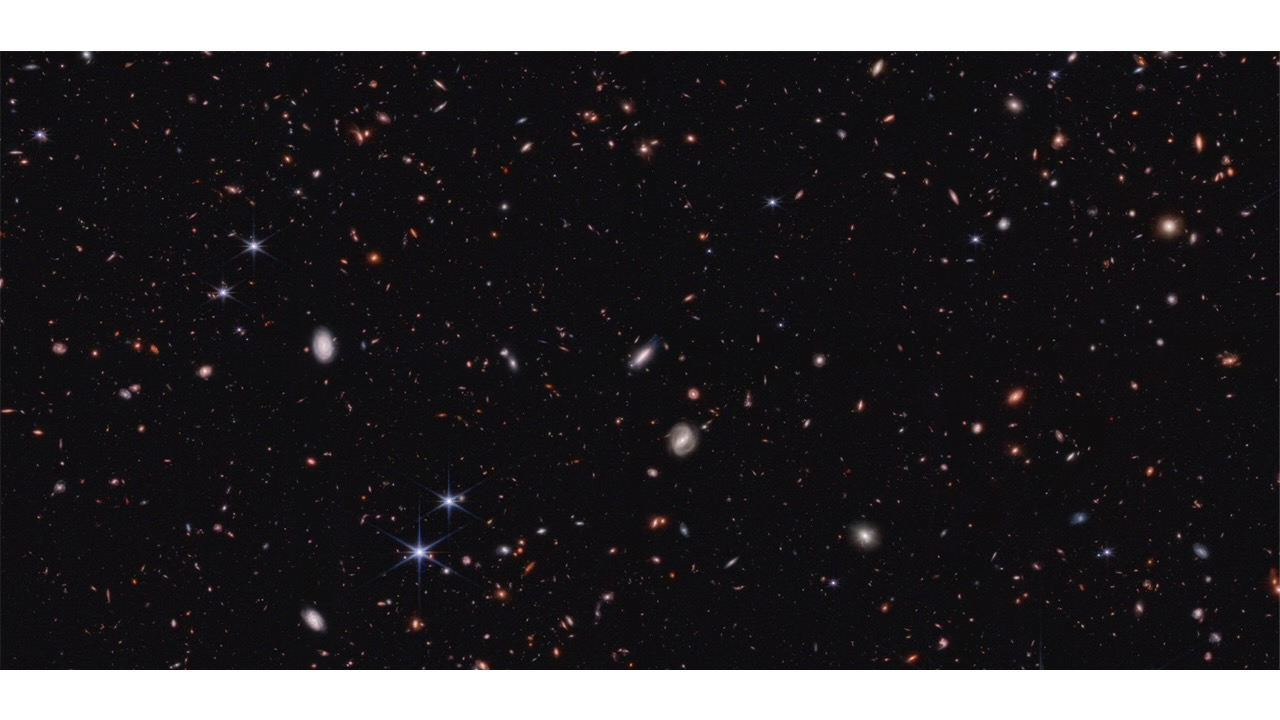
Black holes may be behind why the newborn universe appeared to possess more huge galaxies than scientists could explain, a new study finds.
Astronomers made this discovery with the help of NASA's James Webb Space Telescope (JWST), the largest and most powerful off-Earth observatory to date. Launched in December 2021, the $10 billion JWST specializes in detecting infrared light, just like thermal vision goggles.
Scientists are using JWST to investigate the early cosmos. The universe has expanded greatly since it was born about 13.8 billion years ago in the Big Bang, and that means the light from early galaxies appears reddened by the time it reaches Earth, much as how an ambulance siren sounds lower-pitched to people as the vehicle drives away. JWST is designed to help capture light from the earliest galaxies, much of which has shifted into the infrared range.
When astronomers got their first glimpses of galaxies in the early universe from JWST, they were expecting miniature versions of modern galaxies. Instead, they found that some galaxies had grown very large very quickly.
Related: James Webb Space Telescope (JWST) — A complete guide
This previous research suggested that something might be wrong with scientists' thinking about what the universe is made of and how it has evolved since the Big Bang, known as the standard model of cosmology. All in all, early galaxies seemed to be larger than what the standard model expected by "roughly a factor of two," study co-author Steve Finkelstein, an astrophysicist at the University of Texas at Austin, told Space.com.
Now, Finkelstein and his colleagues find that some of these early galaxies are actually much less massive than they first appeared. They detailed their findings online Aug. 26 in The Astrophysical Journal.
In the new study, the researchers focused on 261 galaxies from about 700 million to 1.5 billion years after the Big Bang. To estimate the mass of galaxies, scientists typically see how much light a galaxy emits and deduce the number of stars it likely possesses to generate all that light. Previously, when it came to early galaxies, NASA's Hubble Space Telescope "was only to glimpse the hottest, most massive stars," Finkelstein said. "JWST observes redder wavelengths, so is sensitive to lower-mass, cooler stars, and so can more accurately measure the total amount of stars in these galaxies."
The scientists discovered that black holes made nine of these early galaxies appear much brighter — and thus bigger — than they really are. Although black holes get their name from how their gravitational pulls are so powerful that not even light can escape, gas falling into black holes can glow brightly from the friction it experiences as it rushes in at high speeds. This extra light can make it appear that galaxies hold more stars than they actually do.
Once the researchers accounted for these black hole-affected galaxies, the standard model could account for the remaining early galaxies.
"So, the bottom line is, there is no crisis in terms of the standard model of cosmology," Finkelstein said in a press release. "Any time you have a theory that has stood the test of time for so long, you have to have overwhelming evidence to really throw it out. And that's simply not the case."
However, "we are still seeing more galaxies than predicted, although none of them are so massive that they 'break' the universe," study lead author Katherine Chworowsky, a graduate student at the University of Texas at Austin, said in the press release.
One possible reason that JWST sees about twice as many massive early galaxies as expected from the standard model is that stars formed more quickly in the early universe than they do today. "Maybe in the early universe, galaxies were better at turning gas into stars," Chworowsky said in the press release.
A star is born when a cloud of gas succumbs to its own gravity and collapses. However, as this gas contracts, it heats up because of friction, generating outward pressure. Nowadays, these opposing forces usually make star formation slow. However, since the early universe was denser than it is today, some research suggests it was hard to expel gas during star formation, letting it happen faster.
Now "we would like to understand why we observe what we observe," Finkelstein said. "One way to do this is to study how these galaxies build up their stellar mass." Such data will come in the next few months, "which we should be able to use to better understand how these massive galaxies formed."







